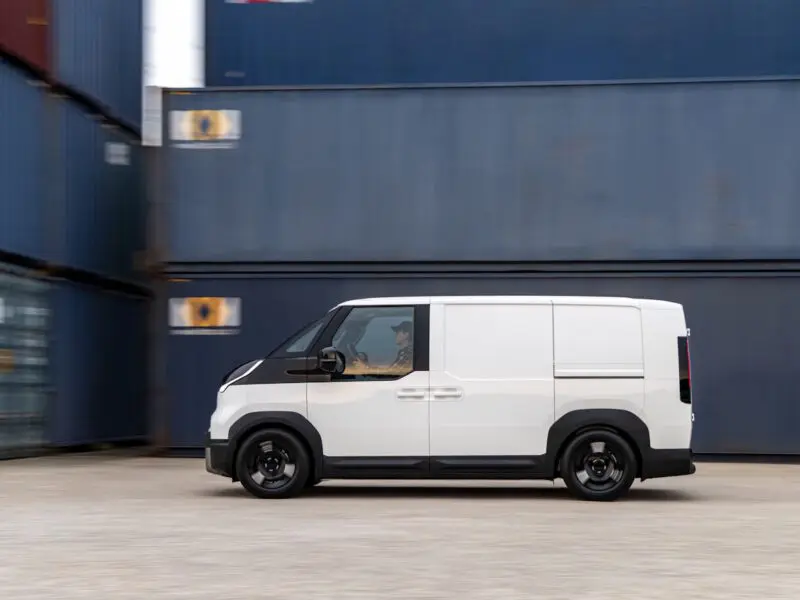
The global electric vehicle (EV) industry continues its rapid evolution, with recent news reflecting an ecosystem that is maturing across multiple fronts — vehicle development, smart charging technology, infrastructure expansion, and public sentiment. The latest stories from The Driven illustrate how automakers, governments, and technology companies are each playing key roles in shaping a cleaner, electric future.
Kia’s PV5 Named World Van of the Year
Kia’s all-electric PV5 has earned top honors as International Van of the Year, showcasing how legacy automakers are proving that commercial EVs can deliver meaningful range, performance, and practicality. The PV5’s recognition highlights a shift in the logistics and fleet sector toward electrification — a segment that has historically been slower to transition due to payload and range demands. The vehicle’s expected arrival in Australia by late 2026 points to a broader rollout strategy by Kia to globalize its electric platforms beyond passenger cars.
The PV5’s win also underscores growing competition in the light commercial EV market, where automakers such as Ford (with its e-Transit) and Mercedes-Benz (with the eSprinter) have already established strong market positions. This award serves as a testament to how electrification in the commercial segment is gaining serious industrial and economic traction.
Nio Firefly Heads for Australia
Meanwhile, Nio’s Firefly, a compact electric hatchback, is moving closer to Australian shores as right-hand-drive production begins. The model is expected to arrive in 2026, representing Nio’s most affordable vehicle to date. The Firefly is designed to make the brand accessible to broader demographics, especially in markets like Europe and Oceania where small cars dominate urban mobility. The expansion of Chinese EV brands into right-hand-drive jurisdictions signals increasing confidence and a desire to challenge both Western and Japanese incumbents.
As global competition intensifies, Nio’s move reinforces the broader trend of Chinese automakers using international production models and technology investments to expand globally — mirroring the way Japanese and Korean automakers did decades earlier.
Smarter Navigation: Google Maps Predicts Charger Availability
On the technology front, Google Maps has introduced predictive EV charger availability, offering drivers an estimate of how many charging stalls will be open upon arrival. Leveraging data analytics and real-time network integration, this innovation reduces the uncertainty that often accompanies EV road trips, especially during busy travel periods.
The feature’s launch just before the holiday season demonstrates how software can enhance the practicality of EV ownership. It is an example of digital infrastructure catching up with physical infrastructure, integrating user experience directly into the EV ecosystem.
GAC Aion V Launches in Australia
The Chinese brand GAC officially launched in Australia with its Aion V electric SUV, offering attractive pricing, solid performance specs, and an introductory package featuring cash-back incentives and home charger deals. The Aion V’s entry not only diversifies consumer choice but also intensifies competition in Australia’s mid-size EV segment, a market currently led by Tesla, BYD, and Hyundai.
This development reflects Australia’s maturing EV landscape, where affordability and charging convenience are becoming major determinants of adoption.
Tesla Hits a Milestone: 75,000 Superchargers Worldwide
Another milestone event saw Tesla opening its 75,000th Supercharger stall globally — and notably, the honor went to a site in Australia. The company celebrated with a unique glacier-blue color scheme at the new charging site. Tesla’s infrastructure dominance continues to set benchmarks in speed, reliability, and expansion rate, with competitors increasingly adopting similar high-speed charging standards through the adoption of open access and plug standardization.
Tesla’s network strategy demonstrates how charging infrastructure has evolved from being brand-specific to becoming a universal backbone for EV mobility.
Shifting Attitudes: Australian EV Driver Insights
A new global survey involving 27,000 EV drivers revealed nuanced insights into consumer perception. Australians emerged as the most likely to avoid Tesla for non-technical reasons, particularly political or brand association factors. However, they also reported increased confidence in EV battery longevity — an encouraging sign for market stability. This dual trend reflects how brand perception and technological trust intersect within the larger energy transition narrative.
China Strengthens Its Infrastructure Dominance
Infrastructural progress continues on a massive scale in China, which now boasts over 18.5 million EV charging points, an increase of more than 50% compared to the previous year. This figure includes both public and private access points, solidifying China’s role as the global leader in EV infrastructure. Such growth not only supports local adoption but positions Chinese firms to export hardware, software, and expertise to other developing EV markets.
Australia Expands Public Charging
In alignment with broader electrification goals, a new round of EV charger grants in Australia will focus on regional towns and celebrated road-trip routes. By bringing reliable charging to rural and tourist regions, the initiative aims to close a significant infrastructure gap and strengthen EV tourism. This policy move aligns local development with international trends that couple emissions reduction with regional economic growth.
The Driven Podcast Highlights Vehicle-to-Grid Potential
The latest episode of The Driven Podcast explores Vehicle-to-Grid (V2G) technology, which turns parked EVs into distributed energy assets. By feeding unused electricity back into the grid, EV owners could play an active role in grid stabilization — especially as renewable energy penetration increases. The discussion, recorded at the Everything Electric Show in Melbourne, highlights how energy management, transportation, and information technology are merging into a unified smart-grid ecosystem.
Connecting the Dots
Taken together, these developments paint an increasingly cohesive picture of the EV industry’s advancement. Automakers are addressing affordability and specialization (with vehicles like the Firefly and Aion V), while tech companies are eliminating practical barriers to user convenience through smarter digital tools. Governments are deploying grants and infrastructure to stimulate adoption, and public sentiment is evolving from curiosity to cautious confidence.
What was once a fragmented movement is now an integrated global transformation. The pace of change underscores one clear truth: the future of transport is being built not in isolation, but through distributed innovation that connects energy, mobility, and culture into a single electric narrative.
All EV Sales Research Team
11/23/2025
